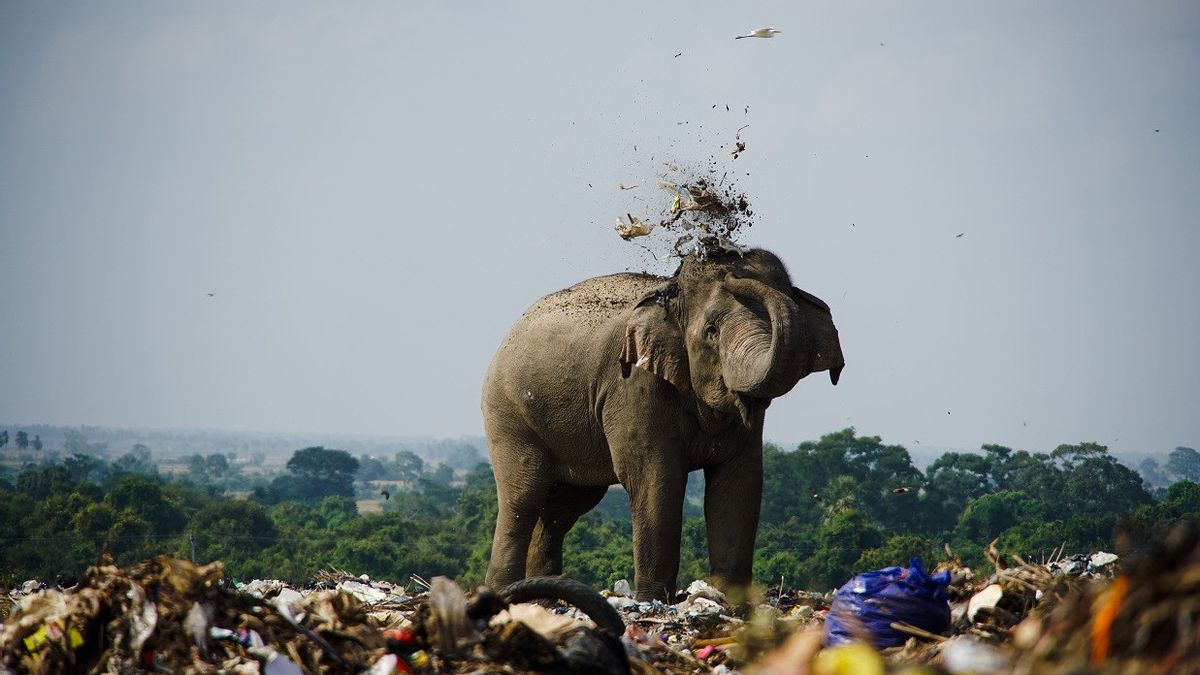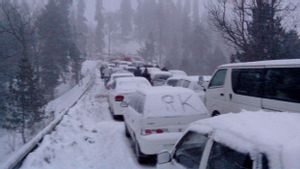JAKARTA - Conservationists and veterinarians warn plastic waste in open dumps in eastern Sri Lanka is killing elephants in the region, after two more were found dead over the weekend.
About 20 elephants have died over the past eight years after eating plastic waste at a landfill in Pallakkadu village in Ampara district, about 210 kilometers (130 miles) east of the capital, Colombo.
Examination of the dead animals showed they had ingested large amounts of non-biodegradable plastic found in landfills, said wildlife veterinarian Nihal Pushpakumara.
"Polythene, food wrap, plastic, other non-digestibles and water are the only things we can see in the post mortem. The normal food that elephants eat and digest is unclear," he explained quoting Daily Sabah from AP, January 17.
Elephants are revered in Sri Lanka but are also endangered. Their numbers have dwindled from about 14.000 in the 19th century to 6.000 in 2011, according to the country's first elephant census.

They are increasingly vulnerable due to the loss and degradation of natural habitats. Many ventures closer to human settlements in search of food, and some are killed by poachers or angry farmers because of the damage to their crops.
Hungry elephants look for trash in landfills, eating plastic and sharp objects that damage their digestive systems, says Pushpakumara.
"The elephants then stop eating and become too weak to support their heavy body. When that happens, they cannot consume food or water, which accelerates their death," said Pushpakumara.
In 2017, the government announced it would recycle waste in landfills near wildlife zones to prevent elephants from consuming plastic waste. He also said an electric fence would be erected around the site to keep the animals away. However, they have not yet been fully implemented.
There are a total of 54 landfills in wildlife zones across the country, with about 300 elephants roaming nearby, according to officials. The waste management site in Pallakkadu village was established in 2008 with assistance from the European Union. Garbage collected from nine nearby villages is dumped there but is not recycled.

In 2014, the electric fence protecting the site was struck by lightning and the authorities never repaired it, allowing elephants to enter and rummage through the landfill. Residents said the elephant had moved closer and settled near the sinkhole, sparking fear among nearby villagers.
SEE ALSO:
Meanwhile, many use firecrackers to repel animals as they roam the village, and some install electric fences around their homes.
However, villagers often don't know how to safely install electric fences, so "it can put their own lives as well as elephants at risk," said Keerthi Ranasinghe, a member of the local village council.
"Although we call it a threat, wild elephants are also a resource. Authorities need to find ways to protect human and elephant lives that also allow us to continue our agricultural activities," he said.
The English, Chinese, Japanese, Arabic, and French versions are automatically generated by the AI. So there may still be inaccuracies in translating, please always see Indonesian as our main language. (system supported by DigitalSiber.id)


















